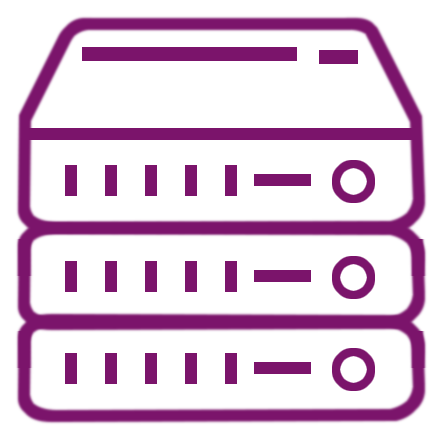What is disaster recovery as a service (DRaaS)?
Disaster Recovery as a Service (DRaaS) is a cloud-based solution that replicates and hosts an organization's IT infrastructure and data at a secure offsite location. In case of outages, hardware failures, or cyberattacks, DRaaS allows businesses to quickly recover operations. It eliminates the need for a secondary physical site, reduces downtime, and supports business continuity. Solutions from providers like Lenovo and Nutanix offer scalable, enterprise-grade infrastructure with integrated management tools for seamless recovery.
What is disaster recovery in IT?
Disaster recovery refers to the strategies, processes, and technologies used to restore IT systems, applications, and data after unexpected events. It ensures minimal disruption to business operations and protects critical workloads. Disaster recovery planning involves data backup, replication, monitoring, and testing recovery workflows. Cloud-based approaches, such as DRaaS, enhance traditional disaster recovery by offering faster recovery, reduced infrastructure costs, and centralized management of IT systems.
How does DRaaS differ from traditional disaster recovery?
Traditional disaster recovery requires a secondary physical site with dedicated hardware, storage, and maintenance. DRaaS leverages the cloud to host replicated workloads and data, enabling faster, automated failover without extensive physical infrastructure. DRaaS provides flexibility, scalability, and reduced operational overhead. Enterprises can quickly adapt to changing workloads while maintaining business continuity, making cloud-based disaster recovery a more agile and cost-effective alternative to conventional on-premises solutions.
What are cloud disaster recovery solutions?
Cloud disaster recovery solutions replicate data and applications to a secure cloud environment. During outages, workloads can be restored on cloud servers or redirected to backup sites. Benefits include reduced infrastructure investment, scalable resources, and automated failover and testing. Enterprises gain faster recovery times and simplified management, while IT teams can focus on strategic initiatives instead of maintaining secondary sites. Lenovo and Nutanix provide validated cloud DR solutions for enterprise environments.
What are the main components of DRaaS?
Disaster Recovery as a Service (DRaaS) integrates multiple IT elements to provide a comprehensive recovery solution. These components work together to protect workloads and minimize downtime during disruptions.
3 Core components of DRaaS:
- Replication: Continuous or scheduled copying of data and applications to the cloud ensures that the latest versions of your workloads are always available.
- Recovery orchestration: Automated failover and failback processes reduce manual intervention and accelerate recovery.
- Monitoring and testing: Tools continuously verify system health and validate recovery plans, providing confidence in operational readiness.
Combined, these elements simplify disaster recovery and enable enterprises to maintain continuity efficiently and reliably.
What benefits does DRaaS offer?
DRaaS provides organizations with a more agile and cost-efficient approach to protecting IT systems. It eliminates the need for maintaining secondary physical sites while improving reliability.
3 Key benefits offered by DRaaS:
- Reduced downtime and faster recovery: Critical systems can be restored quickly, keeping business operations running smoothly.
- Cost efficiency: Cloud-based replication removes the need for large upfront investments in hardware and data centers.
- Scalability: Enterprises can adjust cloud resources as workloads grow or fluctuate, accommodating seasonal or unexpected demand.
These advantages make DRaaS an attractive choice for businesses seeking a flexible, reliable, and efficient disaster recovery strategy.
What is the difference between DRaaS and backup as a service?
Backup as a service focuses on storing and restoring data, typically without real-time application availability. DRaaS goes further by replicating entire IT environments, including servers, networks, and applications, allowing near-instant failover. While backup provides data recovery, DRaaS delivers full operational continuity. Enterprises can quickly resume workloads after disruptions, making DRaaS a more comprehensive solution for modern IT resilience.
How do organizations implement DRaaS?
Organizations typically implement DRaaS by defining critical workloads, setting recovery objectives, and selecting a cloud provider.
4 Steps to implement DRaaS:
- Assessing workloads and determining Recovery Time Objective (RTO) and Recovery Point Objective (RPO).
- Replicating data and applications to the cloud provider’s infrastructure.
- Configuring automated failover and monitoring tools to ensure readiness.
- Testing simulations, failover exercises, and automated recovery.
Partners like Lenovo and Nutanix offer validated DRaaS platforms that simplify deployment while ensuring enterprise-grade reliability.
What are common DRaaS deployment models?
Enterprises can adopt different DRaaS deployment models based on their IT requirements, compliance needs, and budget constraints. Each model provides unique benefits for disaster recovery.
3 Main DRaaS deployment models:
- Public cloud DRaaS: Entirely hosted in a cloud provider’s environment, offering high flexibility and cost savings.
- Private cloud DRaaS: Dedicated resources provide greater control, compliance, and security for sensitive workloads.
- Hybrid DRaaS: Combines on-premises infrastructure with cloud replication, delivering a balance of performance, cost efficiency, and flexibility.
Selecting the right deployment model ensures recovery aligns with organizational priorities and operational goals.
How do RPO and RTO influence DRaaS planning?
Recovery Point Objective (RPO) defines acceptable data loss, while Recovery Time Objective (RTO) sets how quickly workloads must be restored. DRaaS solutions are designed around these metrics to determine replication frequency, resource allocation, and failover mechanisms. Accurate RPO and RTO planning ensures recovery aligns with business priorities and minimizes operational impact during outages.
How secure is DRaaS?
DRaaS solutions include encryption, access controls, and compliance with industry regulations. Data is protected in transit and at rest, with features like multi-factor authentication for added security. Providers also implement monitoring and audit logs to maintain accountability. By using a DRaaS platform, enterprises can safeguard their IT assets while ensuring recovery processes meet security and compliance requirements.
Can DRaaS handle hybrid IT environments?
Yes. DRaaS is designed for hybrid IT environments, replicating workloads from on-premises servers to the cloud. It supports a mix of legacy applications, virtual machines, and containerized workloads. This flexibility allows enterprises to protect diverse IT assets and seamlessly failover across environments without disrupting operations.
How does DRaaS improve operational efficiency?
DRaaS improves efficiency by centralizing disaster recovery management and automating replication, failover, and testing. IT teams spend less time maintaining secondary sites or restoring systems manually. Enterprises can reallocate resources to strategic initiatives while ensuring business continuity, making DRaaS a highly efficient alternative to traditional disaster recovery.
What challenges exist when adopting DRaaS?
While DRaaS simplifies disaster recovery, organizations may face certain challenges during adoption. Understanding these helps plan for smoother implementation and operation.
3 Common challenges when adopting DRaaS:
- Compatibility issues: Some legacy applications and systems may not integrate seamlessly with cloud DRaaS platforms.
- Managing cloud costs: Replication, storage, and data transfer can create variable expenses if not monitored closely.
- Aligning recovery strategies: Complex business requirements may require careful planning to ensure recovery objectives are met.
Addressing these challenges early ensures DRaaS delivers reliable, cost-effective, and efficient recovery for enterprise IT environments.
How do service level agreements (SLAs) impact DRaaS?
SLAs define the provider's commitments for uptime, recovery times, and data protection. Clear SLAs help set recovery expectations and provide accountability. Enterprises can use SLAs to compare providers and select DRaaS solutions that meet performance, compliance, and operational requirements.
How do organizations test DRaaS solutions?
Organizations test DRaaS through simulations, failover exercises, and automated recovery testing. These processes verify that workloads can be restored within RPO and RTO targets without affecting production systems. Regular testing ensures teams are prepared and validates the effectiveness of recovery plans.
How scalable are DRaaS solutions?
DRaaS solutions are highly scalable, allowing enterprises to increase storage, compute, or network resources as needed. Additional virtual machines or servers can be replicated without deploying physical infrastructure. This scalability supports growing workloads, seasonal demand, or unexpected spikes in IT activity.



